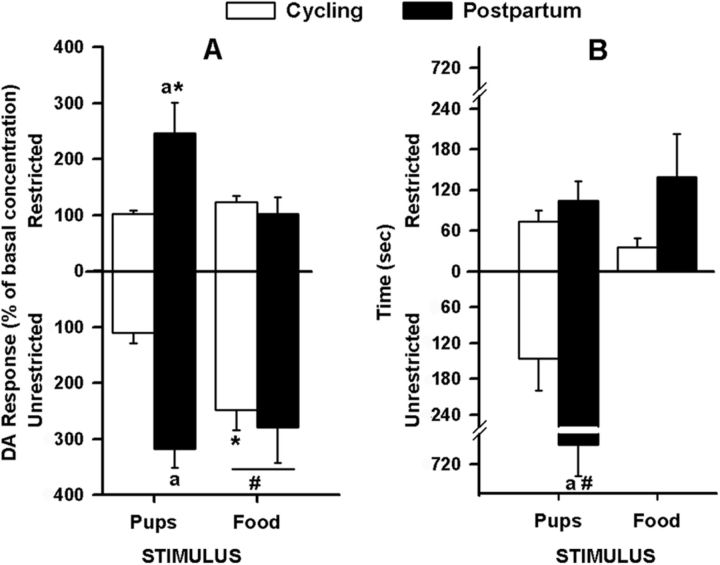Figure 3.
Parity, stimulus, and access had selective effects on (A) DA that was unrelated to (B) behavior in the intact female rat (Experiment 1). A, DA response data (mean ± SEM) represent average percentage of basal concentration. Postpartum (n = 6) females during restriction had increased pup-evoked compared with food-evoked DA, and compared with the cycling (n = 5) group had increased pup-evoked DA, regardless of access type. When unrestricted, cycling females had increased food-evoked compared with pup-evoked DA responses. In all females, DA responses to unrestricted food were increased compared with restricted access. B, Time spent (mean ± SEM) in behaviors directed toward each of the restricted stimuli and during unrestricted pup access. Among postpartum dams, but not among cycling controls, the time spent with unrestricted access to pups was significantly greater than the time spent with pups in the box. ap < 0.05, parity difference for pup stimuli during a given access. #p < 0.05, access difference for a given parity and stimulus. *p < 0.05, stimulus difference for a given parity and access.

